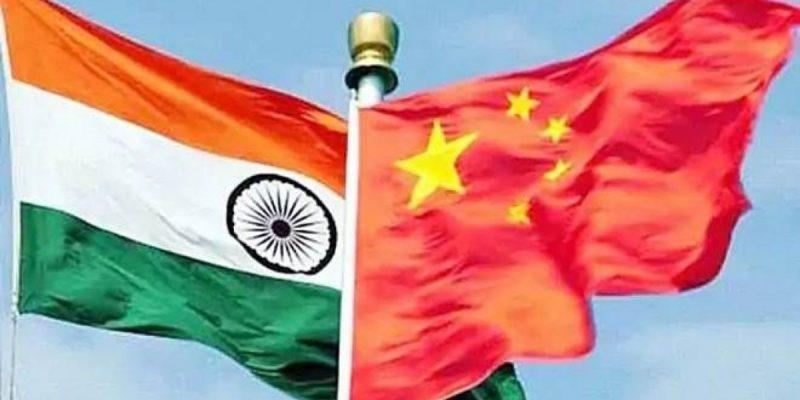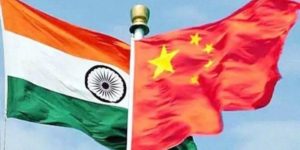
Tension on border in China and India but trade continues, how?

China remained India’s largest trading partner in the year 2020, despite the skirmishes between Ladakh and India on the Ladakh border. In the last financial year too, China was India’s largest trading partner.
Last year was the United States of America and the United Arab Emirates in third place. India imported goods worth $ 58.7 billion from China, which was more than the sum imported from the United States and the United Arab Emirates, while India exported $ 19 billion to China.
After the death of 20 Indian soldiers in the skirmish in the Galvan Valley, there was a tense atmosphere between the two countries. China has admitted a few days ago that four of its soldiers were also killed. However, India claims that there were more Chinese casualties in it.
After Galvan’s incident, there was definitely some impact on the two-way trade between the two countries, which was further affected by the epidemic. But not too much.
All investments from China were banned by the Indian government, with more than 200 Chinese apps banned, citing security reasons, including the popular apps Tiktok, WeChat, and Weibo.
How effective is the self-reliance campaign?
In May last year, the Indian government started a campaign of self-sufficiency aimed at reducing imports, boosting exports, and promoting manufacturing within the country, while experts say these campaigns are more about reducing dependence on China Was focused.
But the latest trade statistics show that despite all these steps, dependence on China has not been reduced. According to statistics, bilateral trade between India and China was $ 77.7 billion last year, which was slightly lower than last year’s $ 85.5 billion according to provisional figures from the Commerce Ministry.
On the other hand, the Government of India has misinformed the news in the media about approving Chinese investment again. Anyway, China has never been a heavy investor in India. China invested $ 2.174 billion in India between 2013 and 2020.
This amount is a small part of foreign investment in India. According to the Commerce Ministry, between April and November in the year 2020, more than 58 billion dollars of foreign investment came into India.
Dr. Faisal Ahmad, a specialist in Chinese affairs at the Four Schools of Management in Delhi, says self-sufficiency does not mean that imports should stop or foreign investment does not come into the country.
He says, “India’s import dependence on China will continue to be high in the coming times. It is necessary that we should think about making ourselves profitable in international trade. It will fulfill our economic interests well and with self-reliance Will support. “
Dr. Faisal further states, “India needs to focus on getting foreign investment (FDI) as a necessary means to become self-reliant. We want to increase production capacity in the field of manufacturing. We are looking at our small and medium enterprises ( SMEs) should help them move internationally so that they can participate in the Global Value Chain (GVC). FDI is necessary for this. In fact, if FDI comes from China, it is contrary to the principles of self-reliance It is not. This is because India is also able to increase its exports to China by 11% and the increase in foreign investment in various sectors will also boost India’s export competitiveness. “
Currently, India is heavily dependent on heavy machinery, telecommunications equipment, and home appliances made in China and it forms a major part of the goods imported from China. As a result, the bilateral trade gap with China in 2020 was approximately $ 40 billion. Such a big trade imbalance is not with any other country.
Furthermore, according to Dr. Faisal Ahmad, “In today’s newly emerging global order, we should also see it in our economic interest. Given the growing role of the US in global affairs, especially the Indo-Pacific, this is part of our strategy And at the same time it is time to rapidly activate economic interests in the region. “
China a little careful
Professor Huang Yunsong, Associate Dean of Sichuan University School of International Studies in China, is in favor of two-way trade between India and China and advancing Chinese investment in India, but he also advises caution.
In a conversation with the BBC, he says, “We take this as a good sign to resume bilateral relations, but with considerable caution.”
In the days to come, he said on Chinese investment, “Chinese investors have learned these difficult lessons about how the economy can shake the economy, and hence there is an atmosphere of not taking much risk and being cautious among Chinese investors at this time. The Indian market is being reviewed again among Chinese investors. “
Professor Huang Yunsong says on Chinese investment, mutual trade, and normalizing the relationship between the two countries, “Many stages of disengagement are yet to be completed, and it is too early to ignore all the risks ahead.” Will be. “
China is the second-largest economy in the world, while India was at number six before the epidemic. Two years ago, mutual trade between India and China reached more than $ 90 billion.
But it saw a decline in 2019. At present, the emphasis of Prime Minister Narendra Modi’s government is to reduce the trade imbalance with China, for which efforts are being made to make the country self-sufficient.
‘Impossible to get rid of China’

Many experts say that it is currently impossible to get rid of China and India’s dependence on China will continue for the next several years. But Dr. Faisal Ahmed says that this issue should not be seen in any time frame.
He says, “I think self-sufficiency is a continuous process, there can be no time limit. This is because if we intend to become a major exporter, we have to become a big importing country as well.”
He goes on to say, “Both the US and China are major exporters and major importers as well. This is because export competitiveness depends on cost advantage and therefore we keep importing raw materials, and part parts in many sectors to increase exports.” Therefore, self-sufficiency is not a limited policy by time. “
China has emerged from the devastation of the epidemic in the most robust way and the Chinese economy rests on a solid footing. India’s economy is also slowly emerging from the epidemic. In the opinion of experts, both will benefit from cooperation between the two neighboring countries.
Also read: Motera Stadium not only changed its name



